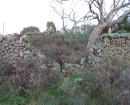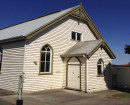Back to search results
CARNGHAM MEMORIAL CHURCH
954 LINTON-CARNGHAM ROAD SNAKE VALLEY, PYRENEES SHIRE
CARNGHAM MEMORIAL CHURCH
954 LINTON-CARNGHAM ROAD SNAKE VALLEY, PYRENEES SHIRE
All information on this page is maintained by Heritage Victoria.
Click below for their website and contact details.
Victorian Heritage Register
-
Add to tour
You must log in to do that.
-
Share
-
Shortlist place
You must log in to do that.
- Download report
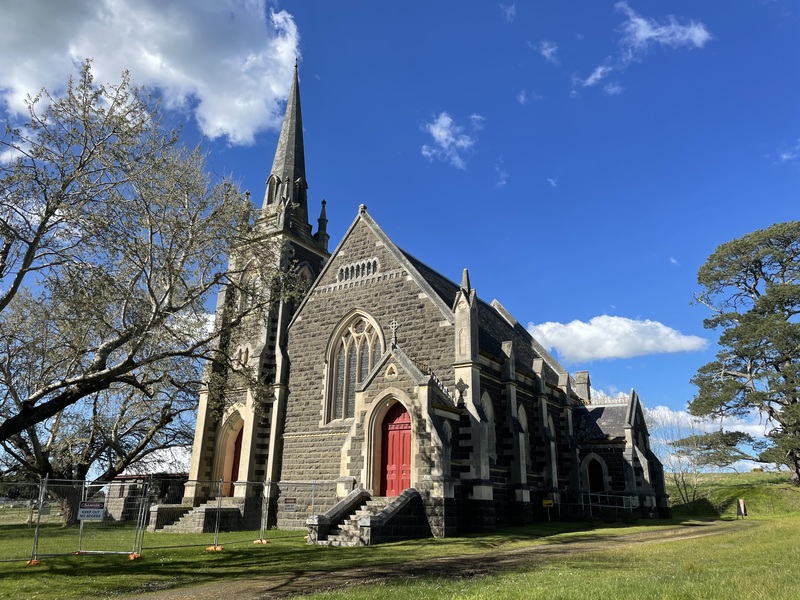
2023. West front of church.


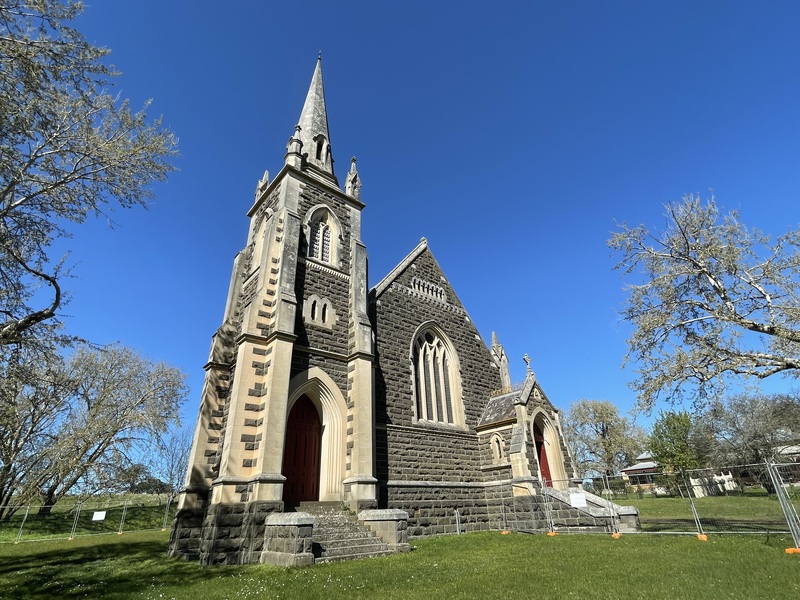
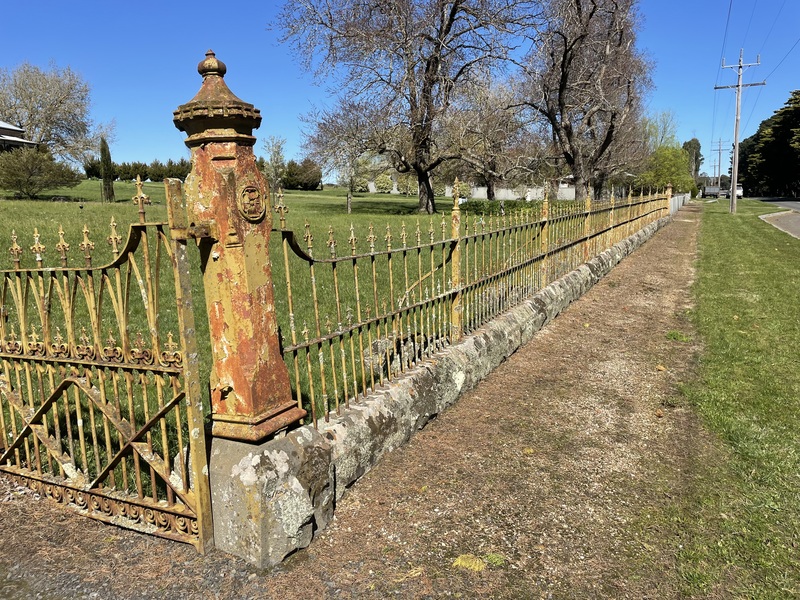
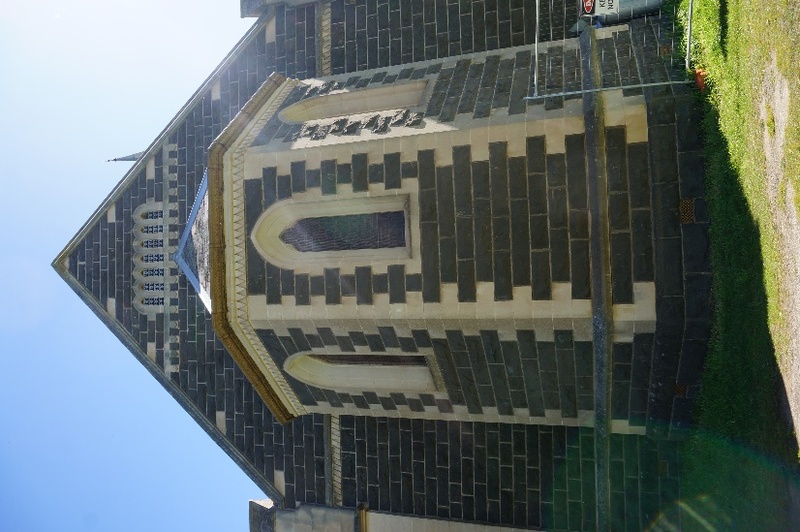
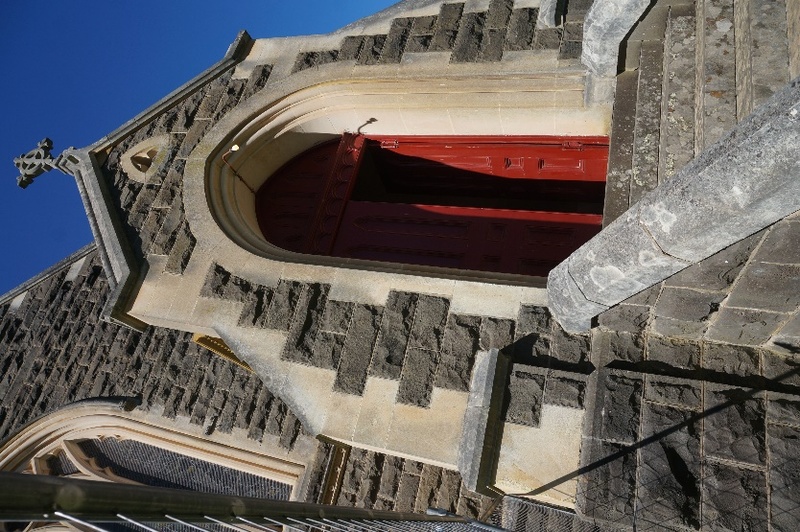
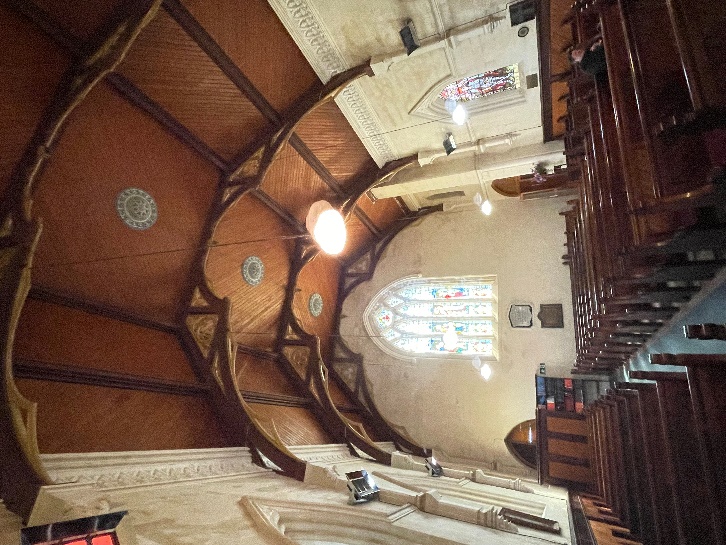
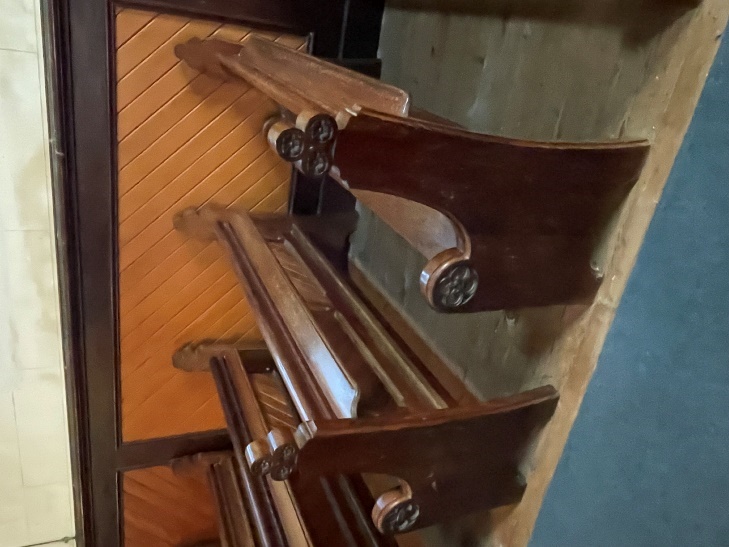
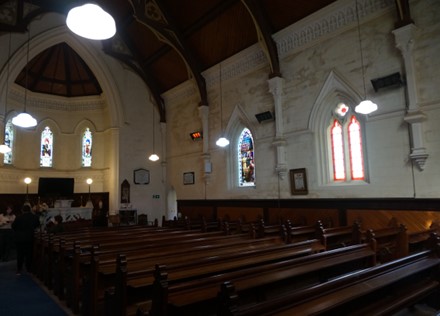
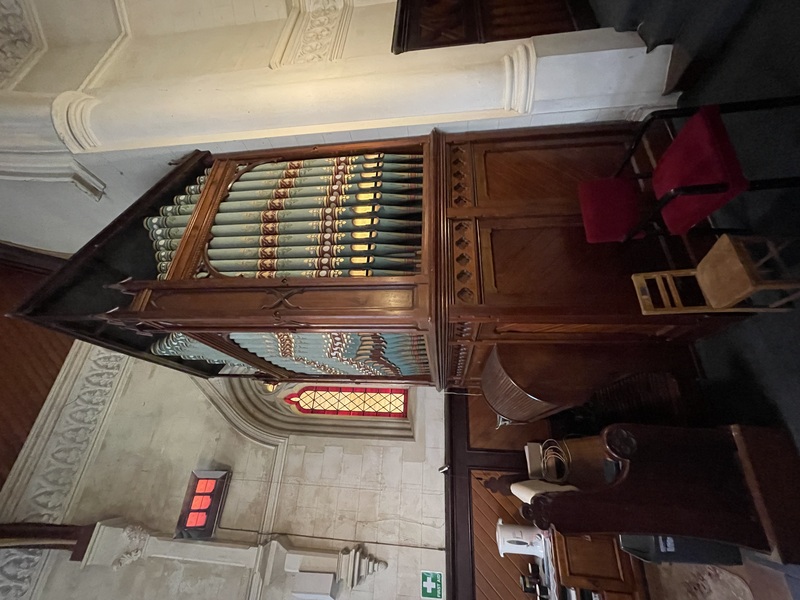

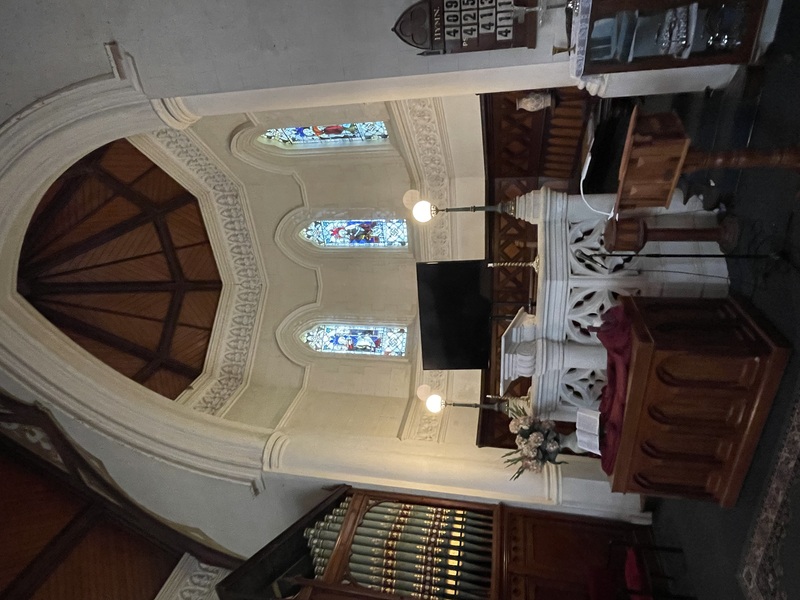
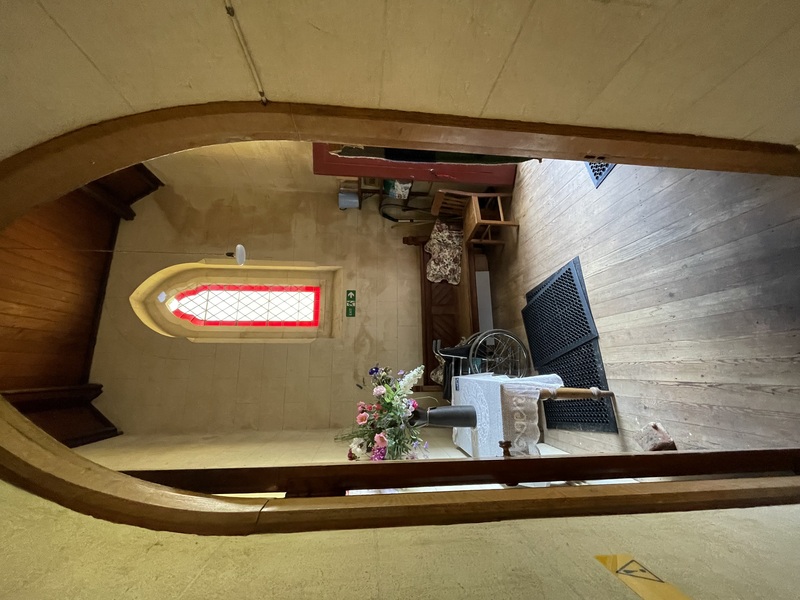

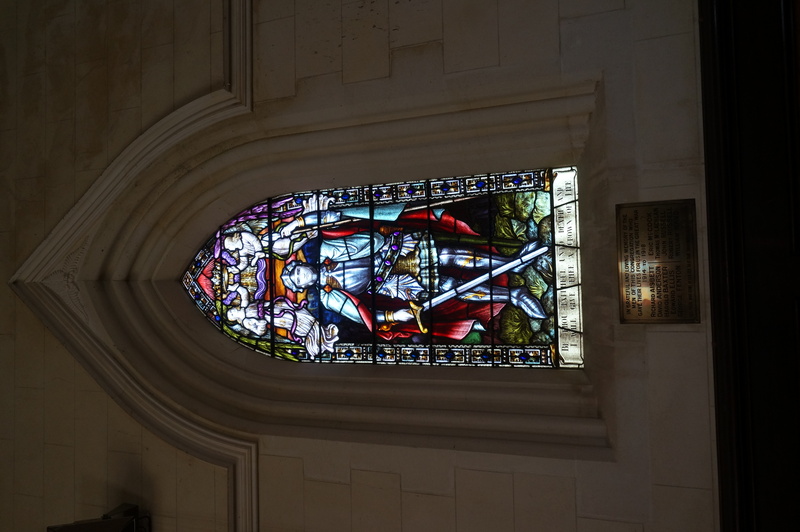

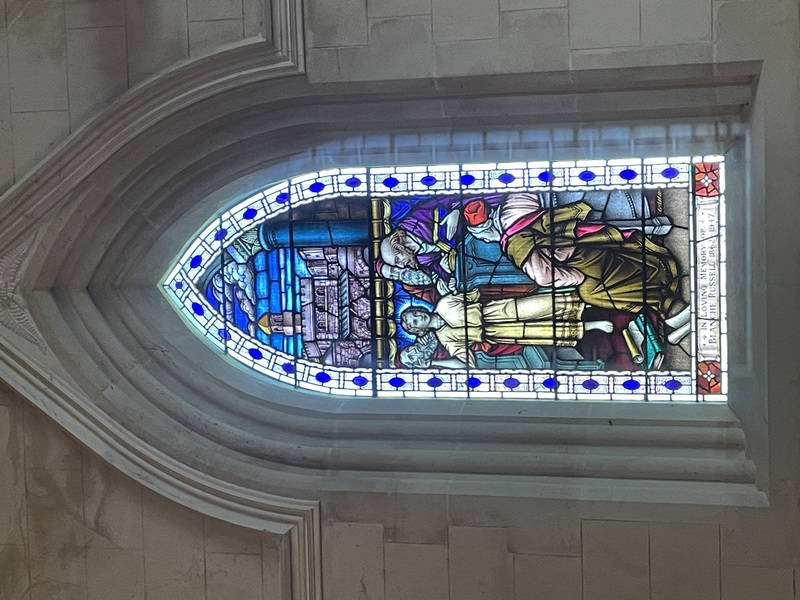
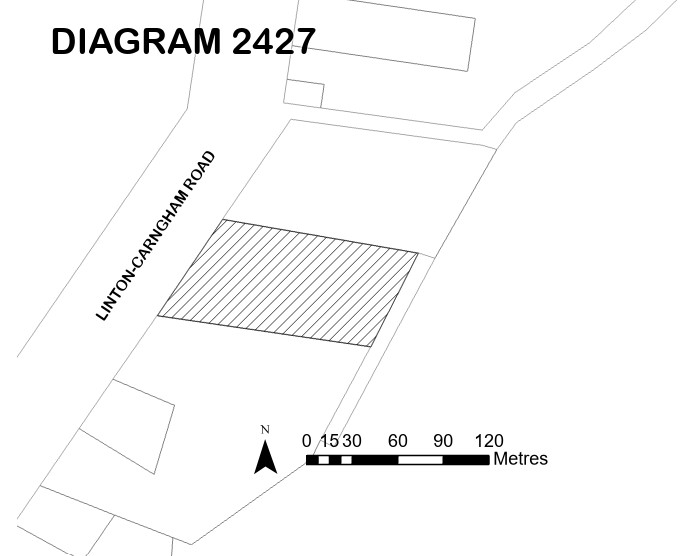
On this page:
Statement of Significance
Carngham Memorial Church is located on Wadawurrung Country.
What is significant?
The Carngham Memorial Church, being of bluestone construction with New Zealand Oamaru freestone dressings and paid for by Philip Russell of Carngham Station. Built in 1893 to a design by Ripon Shire engineer Henry Hall Jackson, the church is in an English Gothic revival style. Significant features include, but are not limited to the exterior and interior fabric of the church, the interior timberwork, and the collection of stained-glass windows and memorials. The land also houses the Sunday School building, constructed of bluestone from the former Chepstowe school, and a cast iron palisade fence and gates.
Objects integral to the significance of the church include:
Objects integral to the significance of the church include:
- Marble plaque (in memory of Annie Russell)
- Silver chalice
- Foundation stone marble plaque
- Palisade cast iron fence and wrought iron gates
- Marble altar and lectern including two brass lamps
- Stained-glass window: “Faith, Charity and Hope”
- Stained-glass window: “The Blessing of the Children”
- Brass plaque (in relation to “The Blessing of the Children” stained-glass window)
- Marble plaque (in memory of Philip Russell)
- Brass plaque (in memory of Lieutenant Philip Leslie Russell)
- Stained-glass window: “St Philip and St James the Great”
- WW1 Timber Cross
- Dead Man’s Penny
- WW1 Honor Roll
- Stained-glass window: “St Michael”
- Brass plaque (in relation to “St Michael” stained-glass window)
- Stained-glass window: “Christ Before the Doctors”
- Solid brass candlesticks (x2)
How is it significant?
The Carngham Memorial Church is of historical significance to the State of Victoria. It satisfies the following criterion for inclusion in the Victorian Heritage Register:
Criterion B
Possession of uncommon, rare or endangered aspects of Victoria’s cultural history.
Possession of uncommon, rare or endangered aspects of Victoria’s cultural history.
Criterion H
Special association with the life or works of a person, or group of persons, of importance in Victoria’s history.
Why is it significant?
The Carngham Memorial Church Organ is a rare example of a Fincham & Hobday pipe organ, built with and retaining the slider less windchest/soundboard. Slider less soundboards were only introduced in a handful of organs including Carngham, the pedal soundboard at St Mary’s West Melbourne, and three organs in New Zealand. Despite being introduced in several pipe organs, difficulties with maintenance have resulted in many being dismantled and rebuilt since. The pipe organ is unaltered beyond the introduction of a cover to the top of the organ, and an electric blower, making it an extremely rare and intact example of Fincham’s soundboard design.
(Criterion B)
The Carngham Memorial Church and objects are historically significant for their association with Philip Russell. Philip Russell was widely recognised as an eminent wool producer, ranking among the top in Victoria in a competitive field. He had an association with sheep breeding from the early days of Victoria's colonization and the wealth displayed at the church is a testament to his significant contributions to establishing the wool economy in the Western District. This direct association with the church highlights his achievements, evidenced by his substantial contributions to its budget, and reflect his considerable success in the wool business. Philip Russell’s life, prominence and contributions were significant in shaping Victoria's historical landscape, which is evident in Russell's influential role in pioneering the wool industry and his philanthropic contributions to the establishment and support of local institutions.
(Criterion H)
Show more
Show less
-
-
CARNGHAM MEMORIAL CHURCH - History
Carngham
The Traditional Owners of the land of the Carngham/Snake Valley district are the Wathaurung People (Wadawurrung). The naming of Carngham station is an example of a squatter naming the station after the Wathaurung name of the land on which the homestead existed.
The Russell family
Philip Russell was born 20 June 1822 the son of a farmer of Fifeshire, Scotland. He arrived in Hobart in 1842 on the ship Calcutta. In March 1843, Philip Russell travelled with his cousin to Port Phillip where they bought from J.D. Baillie 3,500 sheep and the right to Carngham station. The Baillie brothers had been the original Scottish pastoralists in the area having taken up a 30,000-acre run in 1839. By 1843 the Baillies had become insolvent and were forced to sell their stock. Carngham Station was to remain Philip Russell’s primary residence until his death in 1892.
Philip Russell was a sheep breeder, particularly merinos, and was well known and respected in the Ballarat area for his charitable works. He was a member of Ripon Shire Council, elected multiple times as president of the Ballarat Agricultural Society, and was elected to the seat of South-Western Province in the Legislative Council. Following his death in 1892, his estate was valued at £219,000 and his will included provisions for all three sons, the maintenance of services at the Presbyterian, Anglican, and Wesleyan churches at Carngham, and the building of the Presbyterian church. The eldest son, James Russell, was to inherit Carngham Station where it remained in the Russell family until it was sold in 1979.
Carngham Memorial Church
In 1857, occasional services were being held at the homestead of Philip Russell by Rev. T. McAnlis of Skipton, but with the discovery of gold at Snake Valley, the need for regular church services increased. Carngham was officially joined to Skipton as a single charge until the end of 1860 when the Presbytery of Ballarat disjoined Carngham and Skipton in favour of a new charge, comprising Carngham and Linton. At the beginning of 1861, the first committee was appointed to undertake the task of building a church. The church building was erected in front of where the present manse stands.
On 24 October 1861, a call from the congregations of Carngham and Linton, signed by upwards of 150 members, was issued to Rev. Hugh McKail, who was inducted into the charge on the 7 November 1861. The stipend promised was £300, made up of a third from each of the Carngham and Linton congregations, and a third from Philip Russell. A manse, now demolished, was erected at a cost of £200.
In 1878, Philip Russell contributed a cheque of £100 pounds to beginning a fund for the building of a new church. The subscription was repeated, and by 1890 the principal and interest amounted to £1200. In 1890, Philip Russell instructed that this sum be used towards the building of a new manse. The extant manse was built, costing almost the entire amount.
Following Philip Russell’s death in 1892, his will instructed:
[…] An amount of £12,000 is directed to be applied in building a new Presbyterian church and manse at Carngham, to be nearly as possible of the same design as the Scots’ Church in Collins Street. Should any money remain unexpended after the buildings are completed the balance is to be paid to the treasurer of the Presbyterian Church of Victoria for the benefit of the infirm ministers’ fund.The foundation stone of the new church was laid on 23 November 1892, the minister at the time being Reverend Drummond. In 1893, the new church was completed to a design by Henry Hall Jackson. Henry Hall Jackson was Shire Engineer for the Ripon Shire Council from c. 1866 until 1900, when he resigned on account of his health. His work as Shire Engineer ordinarily included repair and construction of bridges, clearing and construction of roads and culverts, the supply of water and the like. The design of Carngham Memorial Church appears to be an exception, likely a result of Jackson having worked with both the elder and younger Russell during each of their times with the council.
The church was officially opened in the same year of 1893. Continuing to be generous benefactors throughout their association with the church, the Russell family commissioned and paid for a number of the church’s significant features including:
- Fincham & Hobday pipe organ, donated by Mrs. James Russell (1894)
- 'Blessing of the children’ stained glass window, donated by James Russell (1893)
- Stained glass memorial window featuring St Philip and St James the Great, gifted by Mrs. James Russell (1908)
- St Michael soldiers’ memorial window, commissioned by Mrs. James Russell (1923)
- ‘Christ before the Doctors’ stained-glass window, commissioned by Mr. Philip Russell (1952)
- The Sunday school building, originally the Chepstowe State School, donated by Philip and Beryl Russell (1963)
- Solid brass candlesticks to the pulpit, gifted by Major Phillip Russell and Mrs Beryl Russell (1966).
The Fincham & Hobday Organ (H2460)
George Fincham came to Victoria in 1852 after a seven-year apprenticeship with Henry Bevington and found alternative work for twelve years until he had enough organ building commissions to sustain him. Arthur Hobday began as Fincham’s apprentice and by 1887 a partnership had formed.
The economic depression of the 1890s meant fewer organ commissions. The organ at Carngham by Fincham and Hobday was one of only two built in 1893 by the firm, though three new organs had been produced by Fincham’s factory the previous year and opened at their respective churches in the first four months of 1893. Arthur Hobday had visited to the newly opened church in September 1893 to discuss the positioning of the new organ (originally to be in the corner near the porch entrance) and in January 1894 the new organ was opened.
The Carngham pipe organ was built with tubular pneumatic action and slider less windchests, which was based on a principle used by German organ builders known as the Kegellade system. The Kegellade system was perfected and patented by prominent organ builder E. F. Walcker of Germany in 1842. Its application by George Fincham in Australia was an innovative solution to a persistent problem with timber soundboards in the Australian climate, where shrinkage across the wood grain would cause the sliders of ordinary soundboards to crack in hot and dry weather. Imported organs faced similar issues, often made in damp climates or exposed to high humidity and dampness during transportation, resulting in damage to otherwise high-quality organ work when exposed to the hot and dry Australian climate.
While the tubular pneumatic action features in many Fincham organ designs, very few organs with Fincham’s slider less windchests were made. Hobday appears to have exported the design to New Zealand, where three Fincham & Hobday organs were built with slider less windchests, however none of these have been retained. While the design worked initially, praised for having perfect responsiveness and quietness at the time, maintenance of the soundboard in later years proved difficult. The result is that most examples of this windchest have been rebuilt or replaced to streamline future maintenance.
Carngham is one of the only surviving examples of the slider less windchests, unaltered excepting the fitting of an electric blowing unit and an organ cover to prevent water damage. Until 1958, the church organ was pumped with bellows by men of the congregation, which proved problematic during WWII when there was a shortage of fit young men to do so. In 1960 Fincham & Sons electrified the organ. Major restoration of the pipe organ was undertaken in 1986 by Mr. Leighton Turner of Ballarat.CARNGHAM MEMORIAL CHURCH - Assessment Against Criteria
Criterion
Criterion B
Possession of uncommon, rare or endangered aspects of Victoria’s cultural history.
Criterion H
Special association with the life or works of a person, or group of persons, of importance in Victoria’s history.CARNGHAM MEMORIAL CHURCH - Permit Exemptions
General Exemptions:General exemptions apply to all places and objects included in the Victorian Heritage Register (VHR). General exemptions have been designed to allow everyday activities, maintenance and changes to your property, which don’t harm its cultural heritage significance, to proceed without the need to obtain approvals under the Heritage Act 2017.Places of worship: In some circumstances, you can alter a place of worship to accommodate religious practices without a permit, but you must notify the Executive Director of Heritage Victoria before you start the works or activities at least 20 business days before the works or activities are to commence.Subdivision/consolidation: Permit exemptions exist for some subdivisions and consolidations. If the subdivision or consolidation is in accordance with a planning permit granted under Part 4 of the Planning and Environment Act 1987 and the application for the planning permit was referred to the Executive Director of Heritage Victoria as a determining referral authority, a permit is not required.Specific exemptions may also apply to your registered place or object. If applicable, these are listed below. Specific exemptions are tailored to the conservation and management needs of an individual registered place or object and set out works and activities that are exempt from the requirements of a permit. Specific exemptions prevail if they conflict with general exemptions. Find out more about heritage permit exemptions here.Specific Exemptions:- Internal changes to the former Sunday School building and attached amenities block are permit exempt.
CARNGHAM MEMORIAL CHURCH - Permit Exemption Policy
General exemptions
General exemptions apply to all places and objects included in the VHR. General exemptions have been designed to allow everyday activities, maintenance and changes to your property, which do not harm its cultural heritage significance, to proceed without the need to obtain approvals under the Act.
Specific exemptions may also apply to your registered place or object. If applicable, these are listed below. Specific exemptions are tailored to the conservation and management needs of an individual registered place or object and set out works and activities that are exempt from the requirements of a permit. Specific exemptions prevail if they conflict with general exemptions. Find out more about heritage permit exemptions here.
-
-
-
-
-
FINCHAM AND HOBDAY PIPE ORGAN
 Victorian Heritage Register H2460
Victorian Heritage Register H2460 -
PRESTON HILL TOWNSHIP
 Victorian Heritage Inventory
Victorian Heritage Inventory -
THISTLE CO.
 Victorian Heritage Inventory
Victorian Heritage Inventory
-
"1890"
 Yarra City
Yarra City -
'BRAESIDE'
 Boroondara City
Boroondara City -
'ELAINE'
 Boroondara City
Boroondara City
-
-




